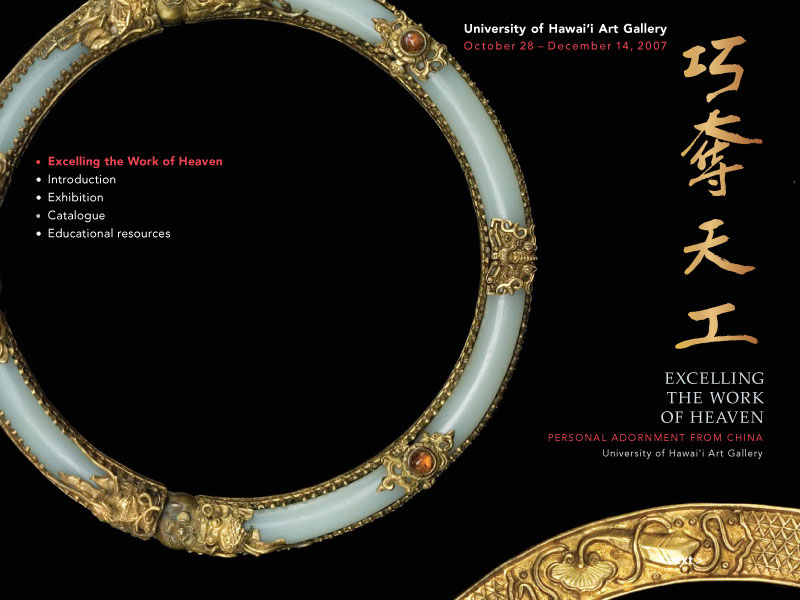

Exhibition Tours:
Led by Co-Curators:
Dr. Kate Lingley, Assistant Professor of Chinese Art History,
and Lisa Yoshihara, UH Art Gallery Director
Sunday beginning at
2:00 and 3:00 p.m.
Gallery Hours and Admission:
Monday - Friday 10:30 - 4:00;
Sunday 12:00 - 4:00
Admission is free.
Parking fees may apply.
Excelling the Work of Heaven: Personal Adornment from China is sponsored by the Department of Art and Art History and the College of Arts and Humanities at the University of Hawaii at Manoa. It is supported in part by the State Foundation on Culture and the Arts through appropriations from the Legislature of the State of Hawaii and by the National Endowment for the Arts; University Research Council's Special Fund for Innovative and Creative Work, University of Hawaii at Manoa; Susan and Aven Shyn; John Chin Young Foundation; Watumull Grant for Museum Studies; Blodwyn Goo Endowment; and anonymous donors.
The University of Hawaii Art Gallery is privileged and honored to present nearly 700 pieces of personal adornment that were selected from the San Francisco-based Shyn Collection for the exhibition Excelling the Work of Heaven: Personal Adornment from China. The exhibition includes outstanding examples of archer's rings, head and hair ornaments, court necklaces, earrings, buttons, necklaces, bracelets, symbolic locks, personal talismans and amulets, needle cases and grooming kits that were made primarily during late Imperial China for the imperial palace, court, and aristocracy.
These exquisite objects of adornment served as indicators of gender, class, and wealth and as protectors of newborns, newlyweds, and court officials. They reveal a history of hidden symbols and motifs as well as the social structure and the high ambitions of the Chinese elite. Incorporating myths, legends, literature, and written characters, the objects display a reverence for the near, distant, and imagined past. The spoken language was transformed into rebuses, visual puns utilizing images of animals, plants, and mythological figures for their symbolic, associative, and evocative powers and auspicious wishes to protect the wearer. The visually stunning objects were meant to invoke or attract blessings of good fortune, wealth, longevity, a happy marriage, a wish for many sons, and for passing the civil service examinations.